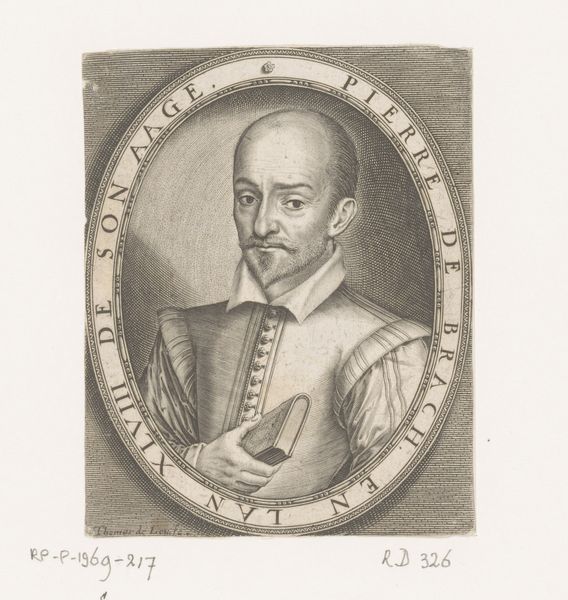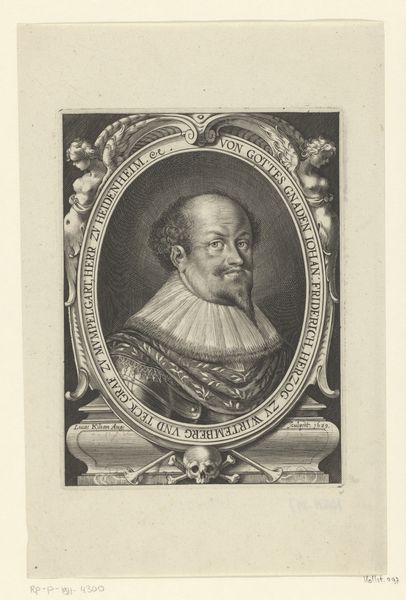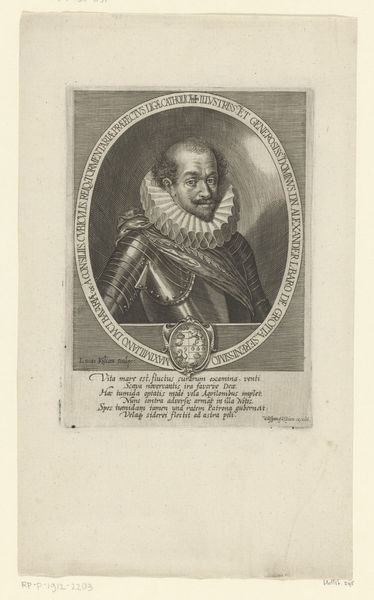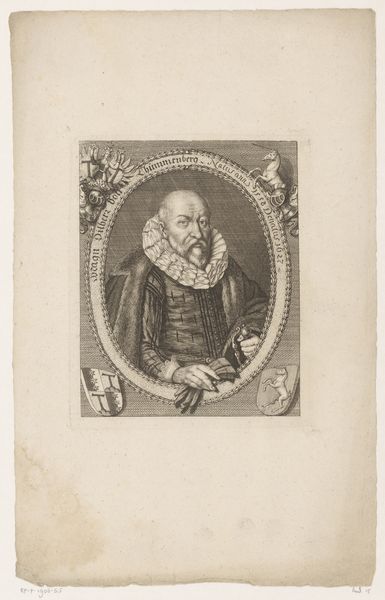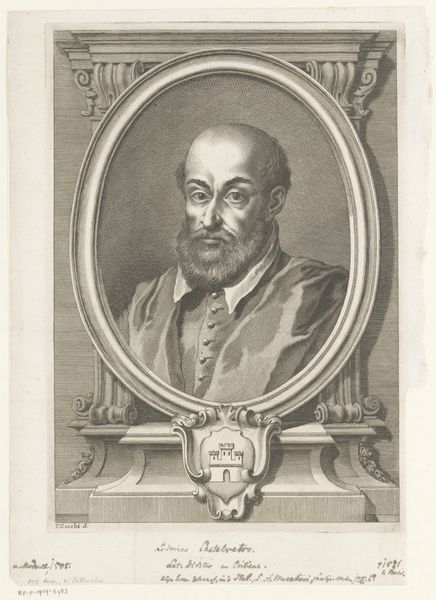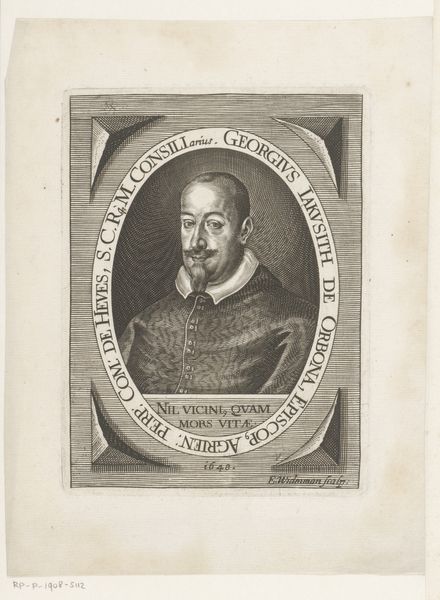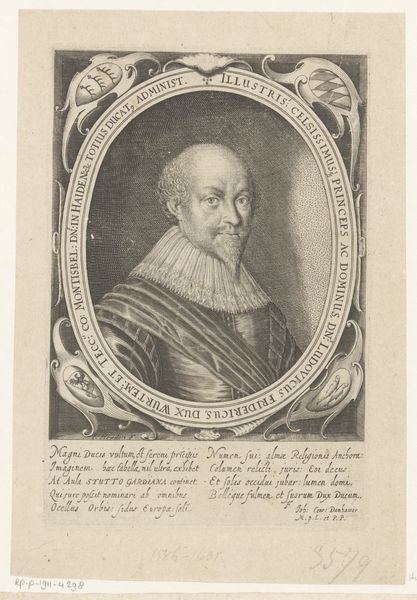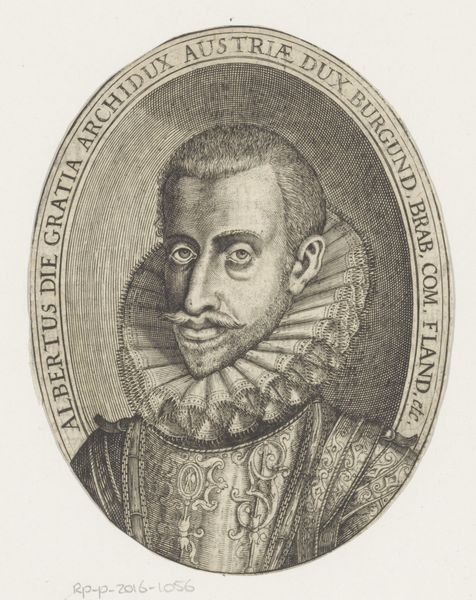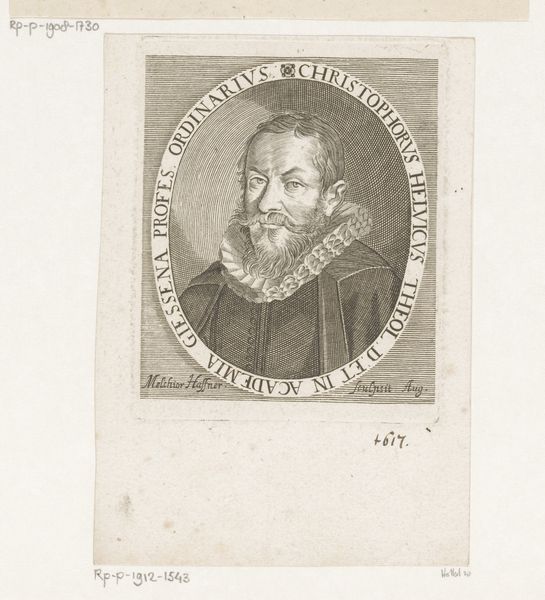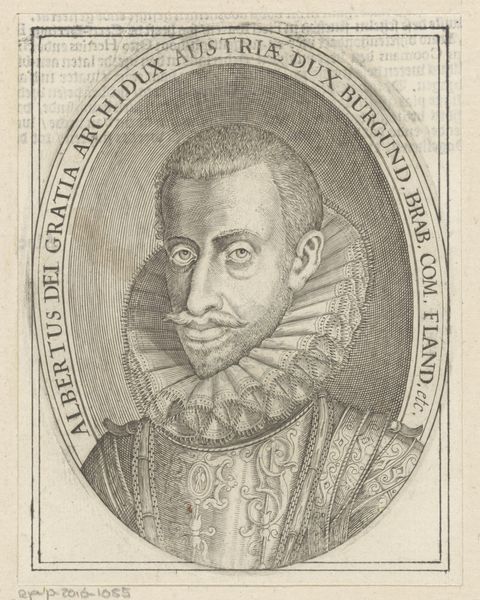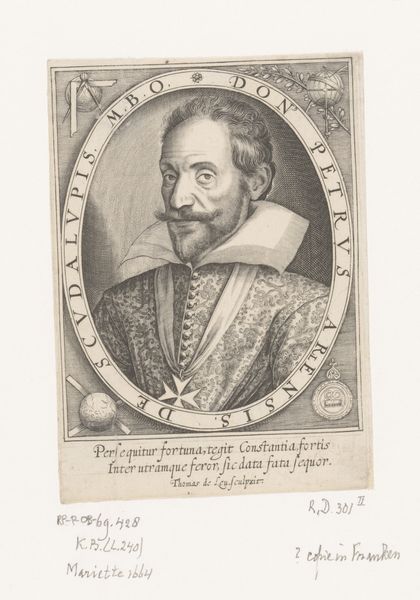
engraving
#
portrait
#
baroque
#
old engraving style
#
history-painting
#
engraving
Dimensions: height 151 mm, width 115 mm
Copyright: Rijks Museum: Open Domain
Curator: Let’s discuss this engraving now held at the Rijksmuseum: a portrait of Paul von Praun dating, it is thought, from sometime between 1710 and 1781 and created by Georg Lichtensteger. It certainly strikes me with its somber mood. The sitter, framed in an oval, emanates an air of serious contemplation. What catches your eye initially? Editor: The clear mastery of line, certainly, especially when you consider it’s an engraving! It has a remarkable tonal range for a print. The sheer labor involved in producing this level of detail across the ruff, the skin texture— it must have taken a considerable amount of time and expertise. It is itself a precious object. Curator: Precisely. And those precise lines give form to details like the crisp folds of the ruff collar which was then a potent symbol of status. He is enclosed, protected, even separated from the world by it, highlighting his position in society. We can almost hear echoes of previous generations looking at that collar, that shape. Editor: Also of social restriction, perhaps. It certainly emphasizes the sitter's erect posture and formal demeanor; the material suggests both wealth and rigid social codes. I wonder about the kind of printing press that was used and the labor conditions to create prints of this quality; prints that brought art to a broader market. The artist's choice to depict him enclosed further tells us that a person like Praun belongs in collections as well. Curator: I agree. The use of oval frames also speaks to classical traditions of portraiture, emphasizing not only rank but intellect. We see a calculated use of symbols meant to position Praun within a legacy of scholarship. What's fascinating is the incorporation of his coat-of-arms underneath, adding another layer to his identity, both individual and dynastic. The inscriptions further assert Praun as a guardian and scholar which reflects how portraits such as this one preserved not just likeness but cultural values, shaping perception over centuries. Editor: It makes me think of Lichtensteger as a skilled artisan working within very strict economic and artistic parameters of his time. He likely produced many such portraits, making a living while subtly encoding these status markers within the very fiber of the artwork, imprinting values and, quite literally, inking narratives into public circulation. Curator: That's a solid point. This work prompts us to consider the layered significances in images from the past and invites curiosity regarding why certain historical narratives have become canonized over others. Editor: Yes, to value not only the artistry and artistry of Lichtensteger but also the production apparatus in this kind of cultural representation!
Comments
No comments
Be the first to comment and join the conversation on the ultimate creative platform.
